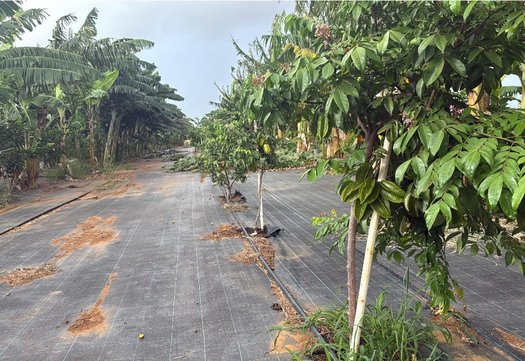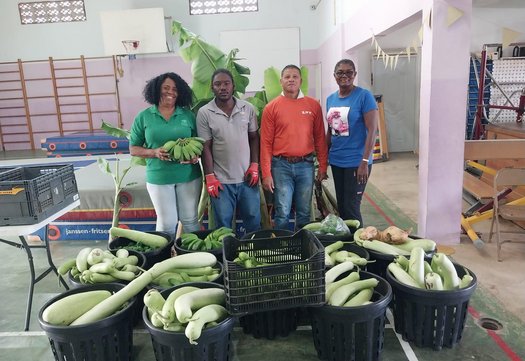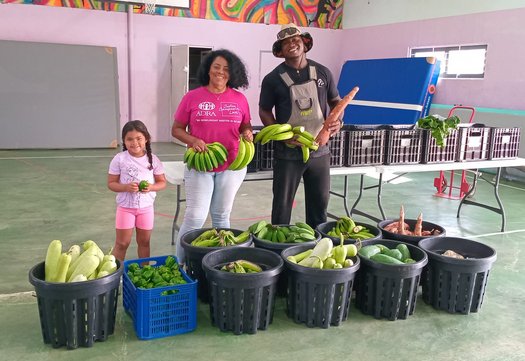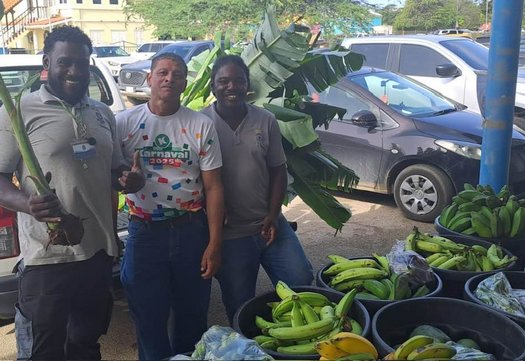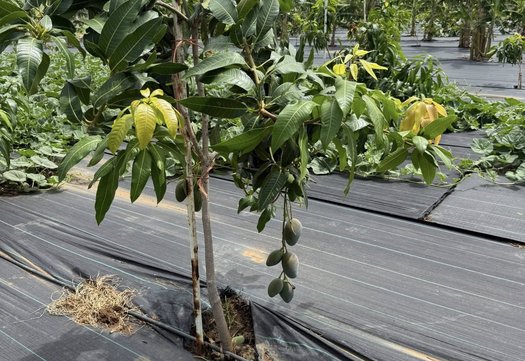Fresh Produce for Bonaire’s Food Bank
Locally grown and fairly shared for a healthier, stronger island
Picture the morning sun over Bonaire’s kunuku. Rows of bonchi kunuku sway in the breeze. The scent of damp earth rises after an early watering. An LVV staff member lifts a crate of freshly dug cassava, hands dusted with soil. Every crop in this field is grown for neighbors who need it most.
On three hectares of farmland, the Department of Agriculture, Livestock and Fisheries (LVV) grows a colorful mix of vegetables: okra, eggplant, peppers, sweet potatoes, and cassava. Two large orchards hold 1,200 fruit trees — mango, soursop, tamarind, sapodilla, coconut, and starfruit among them. Bananas and bakoba, a local variety, are now delivered to the food bank every week.
To protect the harvest, greenhouses keep birds away from fruit trees. Sturdy fencing stops roaming donkeys and goats from wandering in. In another greenhouse, sorghum (maishi chikitu) grows until it’s ready to be milled into flour. Fresh, local, and ready for the table.
Why it matters
On Bonaire, fresh produce isn’t always easy to get. Many families struggle to put healthy food on the table every day. This project changes that by giving more households access to nutritious, locally grown food, free through the food bank. It also builds long-term food security. By farming on island soil, Bonaire depends less on imports and more on its own skill, knowledge, and sustainable practices. “When people see the label ‘grown on Bonaire,’ their faces light up,” says LVV’s Maurice. “It means home — and it means hope.”
How it works on Bonaire
The sorghum harvest tells the story. Outdoors, birds would strip the grain before it ripened. Indoors, in the greenhouse, the crop thrives. Once harvested, it’s milled into flour and sent straight to the food bank.
For now, LVV runs the full production. In the future, a local entrepreneur will take the lead. LVV will focus on training, mentoring, and helping new growers start their own plots. The kunuku becomes the classroom, and knowledge is the harvest.
What it’s changing
Every week, hundreds of kilos of fresh produce go to the food bank. Families take home food that’s healthy, flavorful, and grown just a few miles away. Dependence on imports falls. Local soil is used for its truest purpose: feeding people. Transport emissions drop. Most importantly, a culture of sharing, learning, and caring for one another is taking root. You can be part of that change and help keep Bonaire’s harvest close to home.
